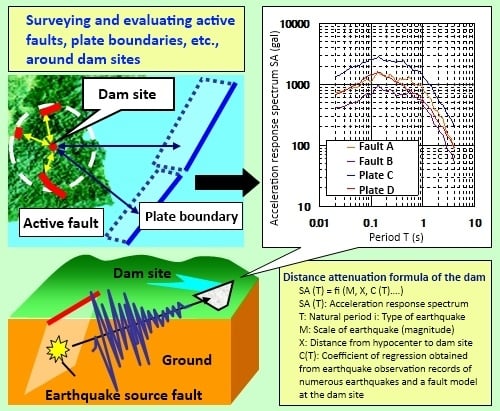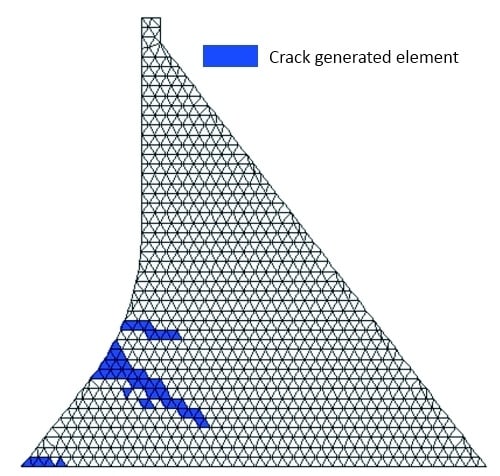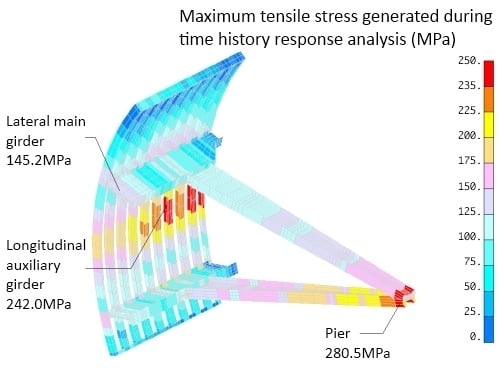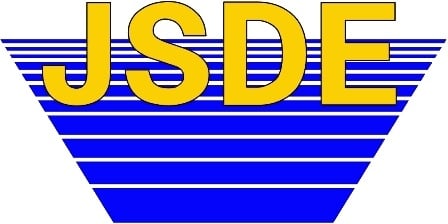Research on a method of verifying seismic performance of dams
against large earthquakes
Currently, dam design in Japan is based on the seismic coefficient method, in which the applied load is a static horizontal inertial force, as specified by the 1976 Cabinet Order Concerning Structural Standards for River Administration Facilities, etc. However, the recent development of earthquake motion measurement systems and the accumulation of earthquake observation data at the dam sites, have provided evidence of earthquake motion far exceeding the conventionally hypothesized level (design seismic intensity).
Thus, the Ministry of Land, Infrastructure, Transport and Tourism has established a technical committee of academic experts and technological specialists at the Japan Dam Engineering Center, and has proposed technological guidelines (River Bureau (currently Water and Disaster Management Bureau), March 2005: Guidelines for Seismic Safety Evaluation of Dams (Draft)) to be used for verifying the earthquake resistance of dams when subjected to level 2 earthquake motion, which is the maximum level hypothesized to occur at a damsite.
Verification must be fully based on the latest knowledge and must take a unified perspective extending from the setting of level 2 earthquake motion requiring advanced technological judgment to the evaluation of seismic performance based on analysis results.
The Japan Dam Engineering Center often provides technological assistance for verifying the earthquake resistance of dams based on these proposed technological guidelines, and also actively performs surveysand research projects to establish more rational and reliable methods, such as for improving the prediction of level 2 earthquake motion based on the most recent earthquake motion observation records, and developing and improving rational techniques for analyzing the earthquake response of dam gates and related structures - analyses that are rarely performed - and reflects the results in the successive verification of dams to ensure reliable evaluation.
Thus, the Ministry of Land, Infrastructure, Transport and Tourism has established a technical committee of academic experts and technological specialists at the Japan Dam Engineering Center, and has proposed technological guidelines (River Bureau (currently Water and Disaster Management Bureau), March 2005: Guidelines for Seismic Safety Evaluation of Dams (Draft)) to be used for verifying the earthquake resistance of dams when subjected to level 2 earthquake motion, which is the maximum level hypothesized to occur at a damsite.
Verification must be fully based on the latest knowledge and must take a unified perspective extending from the setting of level 2 earthquake motion requiring advanced technological judgment to the evaluation of seismic performance based on analysis results.
The Japan Dam Engineering Center often provides technological assistance for verifying the earthquake resistance of dams based on these proposed technological guidelines, and also actively performs surveysand research projects to establish more rational and reliable methods, such as for improving the prediction of level 2 earthquake motion based on the most recent earthquake motion observation records, and developing and improving rational techniques for analyzing the earthquake response of dam gates and related structures - analyses that are rarely performed - and reflects the results in the successive verification of dams to ensure reliable evaluation.

Prediction and evaluation of level 2 earthquake motion at the dam site using the distance attenuation formula, etc.

Earthquake response analysis of a gravity dam considering the damage process

Three-dimensional dynamic response analysis of a large-scale gate

